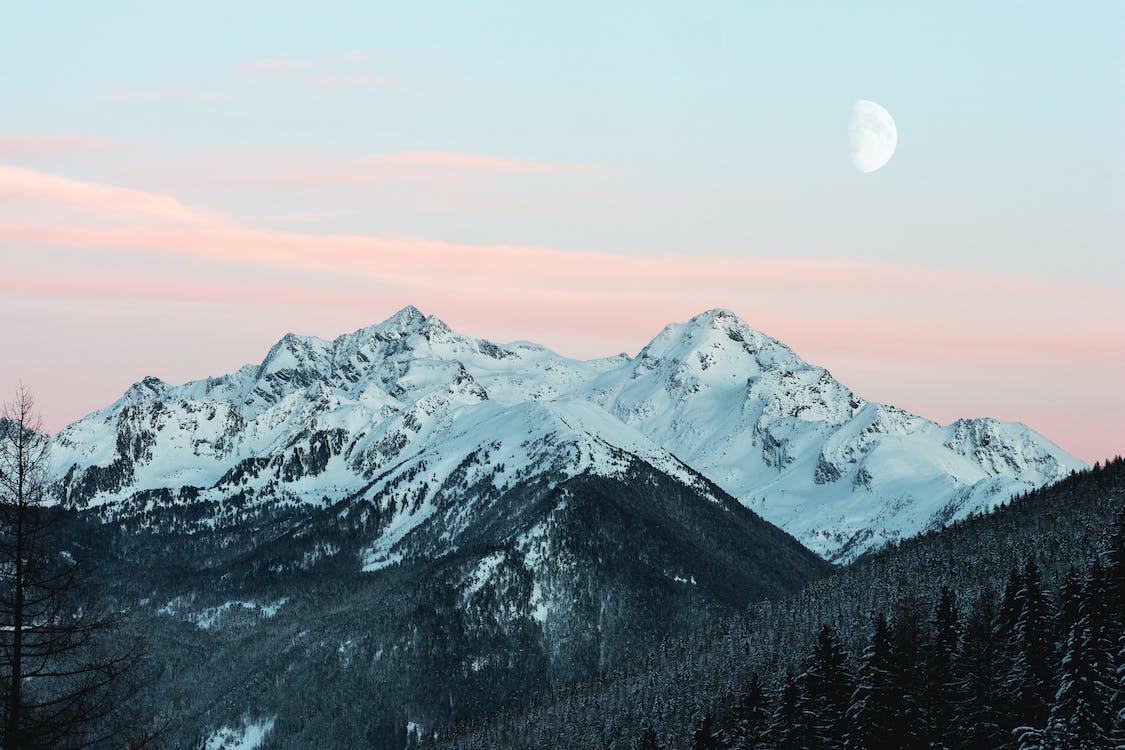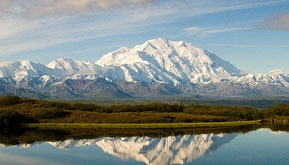There is no specific rule that states how exactly should mountains be called. Some mountains are named after the person who first climbed or surveyed it, while others are named after its appearance and its prominent features. Some are named after gods, while some are named after the place where it is located. Sadly, not all mountain names are agreed upon, causing controversies upon different parties.
 1. Mt. Denali (Alaska, USA)
1. Mt. Denali (Alaska, USA)
The name of the tallest mountain in North America was a subject of dispute between people from Alaska and the national government. Denali has long been known as Mount McKinley.
Long before, local tribes of the Koyukon Athabaskan people in Alaska called the mountain as “Denali,” which means “the high one.” Other groups named it Doleika, Traleika, or Tenada, which all roughly means “the big mountain.”
The mountain was also named Bolshaya Gora during the Russian ownership of Alaska, and Densmore’s Peak from the name of the gold prospector Frank Densmore who fervently praised the mountain’s majesty in 1889.
Then came William Dickey, a prospector who was digging for gold near the mountain. When he returned home, he wrote an account of his experience for The New York Sun on 1897, calling the mountain McKinley. He named it after the then-presidential candidate William McKinley of Ohio, whom he favored because of his gold standard advocacy. Somehow, the name stuck.
The US Board of Geographic Names chose McKinley as the official name despite the Alaskans’ and mountaineers’ preference to call it Denali. When President McKinley was assassinated in 1901, it led to public sentiments that favored its commemoration of his memory by establishing the Mount McKinley National Park in Alaska.
In 1975, the Alaskan Board of Geographic Names changed the name of the mountain back to Denali, but Rep. Ralph Regula of Ohio blocked all legislation to rename the mountain until his retirement in 2009. After that Alaskan representatives take advantage of the opportunity and pushed for the name change, but were blocked once again by two new Ohio congressmen.
Finally, President Obama restored the name to Denali in 2015.
2. Mt. Rainier (Washington, USA)
Captain George Vancouver was the first European to discover the 14,000-foot mountain in 1792 and named it Rainier in honor of his friend, Rear Admiral Peter Rainier.
However, he didn’t know that the Native Americans call it Tacoma. Other tribes called it Tahoma, Tacloban, Talol and other transliterations since the natives have no alphabet. Tacoma means “mother of all waters” in the Lushootseed language. The word describes the mountain’s beautiful glaciers which serve as a source of water to many rivers and lakes near the area.
During the 1800s, Tacoma and Rainier were both used to refer to the mountain. The US Board on Geographic Names declared that the mountain is called Rainier in 1890. Some attempted to change it back to Tacoma, but the Board repeatedly refused to change its name. They argue that they lack evidence that the Tacoma name was widely used.
When Mt. Denali’s name was restored from Mt. McKinley, debates over Mt. Rainier’s name intensified.
3. Negro Mountain (Maryland and Pennsylvania, USA)
The Negro Mountain is a 30-mile long ridge in the Allegheny Mountains, extending from Maryland to Pennsylvania. Its racially embarrassing name makes it one of the most controversial mountain names in the US.
One of the stories explaining the origins of the mountain name involves a battle during the French and Indian War in 1756. A US Army Colonel and its troops are thought to have clashed with the Native Americans on the mountain. One brave, black slave named “Nemisis” was killed in the battle, and the ridge was named Negro to honor him.
The unsophisticated name became controversial when a Pennsylvania state representative raised questions about the mountain’s “disparaging” name in 2008. By 2011, nine state senators from Maryland passed a bill to rename the mountain, along with Polish Mountain, but the measure failed to pass.
4. Castle Mountain (Alberta, Canada)
Located within Banff National Park in the Canadian Rockies, the Castle Mountain is one of the most familiar peaks in the region. In 1858, it was named by Scottish geologist James Hector as such because of its distinctive castle-like appearance.
However, in 1946, Prime Minister Mackenzie King suddenly changed the name of the mountain to Mt. Eisenhower to honor their visitor, former US General Dwight D. Eisenhower, the Supreme Commander of the Allied Expeditionary Forces in Europe that time.
Immediately, it incited mixed reactions from the residents. Decades of protest followed. By the 1970s, Banff area residents expressed all the more their displeasure of the name through signing petitions and filed it to the Alberta Heritage Sites Board for the restoration of the original name. It was in 1979 when the mountain was finally renamed, but the now deceased Eisenhower was still honored with an isolated pinnacle on the southeastern side named as Eisenhower Tower.
5. Mount Sopris (Colorado, USA)
A Colorado citizen named J.P. McDaniel has decided to name the eastern peak of Sopris as John Denver Peak as a tribute to the late singer-songwriter John Denver. In 2011, she started an international petition to ask the US Board of Geographical Names to consider it, since Denver served as an environmentalist and conservation advocate who did more than most people to maintain the sanctity of the wilds.
This started some controversy in the state as people saw it as a way to commercialize the wilderness. Some opponents claimed its victory at the time when she hasn’t even submitted the proposal yet. Online media outlets and newswires sensationalized the story, spreading headlines like “Mountain to be renamed after tacky singer-songwriter,” which is erroneous because and she only asks for the renaming of one peak and not the whole mountain.
Despite the backlash, she still reiterated that naming the peak after Denver would be a fitting tribute, not just because he wrote Rocky Mountain High (one of the official state’s songs of Colorado), but due to his lifelong commitment to environmental and humanitarian causes. However, local surveys in two Colorado municipalities showed that 94% of the respondents were against the proposal. The petition stopped and the peaks of Mount Sopris remained unnamed.


 1. Mt. Denali (Alaska, USA)
1. Mt. Denali (Alaska, USA)